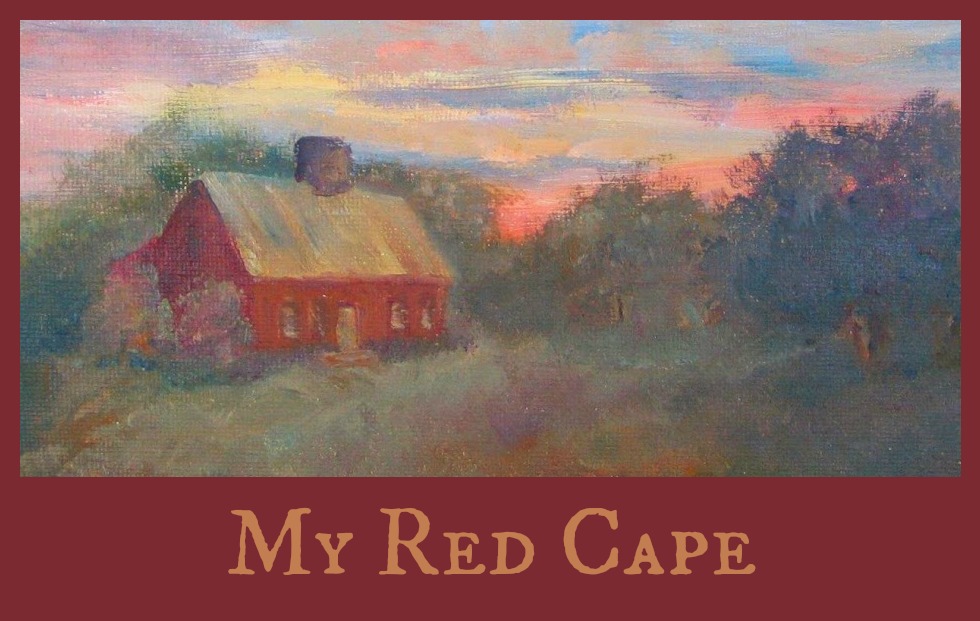Large bag like pockets preceded our common practice of sewing pockets into garments themselves. Women wore pockets tied around the waist with long strings, under the skirt but over the petticoat. These waist pockets were accessed by means of an opening in the side of a lady’s skirt. They were sometimes worn in pairs, one on each side. Some of the most beautiful examples are decorated with crewel embroidery. The pocket might hold many things, such as household keys or a bit of needlework or a sewing rollup.
These directions are for making a doll sized pocket. Your choice of fabrics will largely determine
the success of the project. This is a great use for a special small scrap. Also needed is some type of binding which can
be bias cut light weight cotton fabric 1 inch wide, or as in the illustration
shown, old used cotton seam tape. A soft
piece of old ribbon is another excellent choice.
Instead of using a
strip of bias cut fabric, finishing the edges with a binding of twill tape is
also correct. Cotton twill tape may be dyed for this purpose. This type
of tape was woven on small hand-held wooden tape looms. Women and girls
carried these interesting little looms about with them, to make use of spare
moments, (we will not say idle moments!) A nearly endless list of uses existed
for these tapes, as can be shown in any collection of early household linens or
garments, particularly children’s garments.
Making the Pockets
Cut out a paper shape using these pictures as a quide.
From fabric chosen for the back of the pocket, cut one back
piece without a slit. The back may be of medium heavy fabric to add shape and
substance to the finished piece.
Cut one pocket front and front lining if wanted with a slit
from the top as shown. The front of the pocket can be of light weight quilted
work, or any other attractive fabric which will give an 18th century
or early 19th century look to the pocket.
Baste or pin the front to the front lining if any. Finish
the center slit with a piece of bias cut fabric At the point of the slit,
either a double outside miter may be used or the extra fullness may be gathered
and eased with tiny stitches.
When the front slit is finished, baste the pocket front to
the back, right sides out, and sew binding around the sides and bottom of the
pocket. To complete the pocket, the center of a long piece of binding is sewn
across the top of the pocket and extended in both directions to make waist
strings.
36" Voit "Birdie" in an old dress given to her by my friend Phyllis and holding a pocket I made for her from a great early fabric!
This is a great way to use an early fragment of fabric you love.
See a great article on MAIDA about twill tape:
Use of Twill Tape in Antique Doll and Reproduction Doll Clothing
http://www.maidatoday.com/2011/05/use-of-twill-tape-in-antique-and.html
See a great article on MAIDA about twill tape:
Use of Twill Tape in Antique Doll and Reproduction Doll Clothing
http://www.maidatoday.com/2011/05/use-of-twill-tape-in-antique-and.html
Have fun! e





